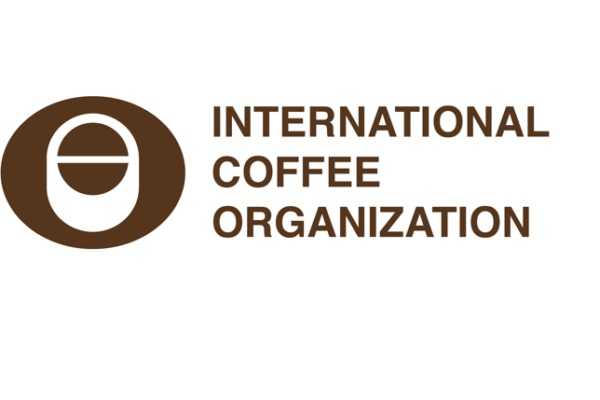LONDON, UK – The ICO Composite Indicator Price (CIP) for March averaged 194.78 US cents/lb 2022, a fall of 7.6% in comparison with the previous month, breaking a streak of 17 consecutive months of increases, reports the International Coffee Organization in its latest monthly report. Every group of coffee recorded a reduction over the previous month, with Brazilian Naturals presenting the highest reduction of 9.4%.
The average of the 2nd and 3rd position of the New York futures market decreased by 9.4% from 245.38 in February 2022 to 222.44 US cents/lb in March 2022. Arbitrage between London and New York futures markets shrank by 12.1%, falling from 144.81 US cents/lb in February to 127.23 US cents/lb in March 2022.
The differential between the Colombian Milds and Other Milds continue to increase for the eighth consecutive month, rising to 27.33 US cents/lb in March 2022.
Intra-day volatility of the Indicator Price grew by 1.3%, from February to March 2022, rising from 7.3% to 8.6%. In October 2021, intra-day volatility amounted to 8.3%, peaking at 10.1% in December 2021, whilst the least volatile month was February 2022.
The New York futures market helped drive up the CIP’s volatility as it grew by 1.4% from February to March 2022, reaching 10.4%. Certified stocks at the close of March 2022 reversed the previous downward trend, as NYBOT gained 13.9% from February 2022, rising from 1.08 million 60-kg bags to 1.23 million bags. LIFFE certified stocks grew by 90,000 bags, or 5.8% during that same period, from 1.54 million bags to 1.63 million bags.
Global exports of green beans in February 2022 totalled 9.88 million bags, compared with 10.24 million bags in the same month of the previous year. In October 2021 to February 2022, South America’s exports decreased by 14.5% to 24.99 million bags.
Asia & Oceania’s coffee exports increased by 25.0% to 3.96 million bags in February 2022, and by 21.6% to 18.67 million bags in the first five months of coffee year 2021/22. Exports from Africa decreased by 11.9% to 975,000 bags in February 2022 from 1.11 million bags in February 2021.
In February 2022 exports from Mexico & Central America dropped by 4.1% to 1.47 million as compared with 1.53 million bags in February 2021. Total exports of soluble coffee grew by 64.9% in February 2022 to 1.46 million bags from 888,000 bags in February 2021.
The latest provisional outlook for total production in coffee year 2021/22 remains unchanged at 167.2 million bags, a 2.1% decrease as compared to 170.83 million bags of the previous coffee year.
World coffee consumption is projected to grow by 3.3%, to 170.3 million 60-kg bags in 2021/22 as compared to 164.9 million for coffee year 2020/21. In 2021/22, consumption is expected to exceed production by 3.1 million bags.
Supply and demand trends may be affected by variations due to the downturn in the world economy, increased cost of inputs and production as well import and consumption due to the conflict in Ukraine
The ICO Composite Indicator Price (CIP) lost 7.6% from February to March 2022, averaging 194.78 US cents/lb for the latter. This marks a break to the 17 consecutive months of CIP increase. A low of 186.85 US cents/lb was recorded on March 15th 2022, whilst the CIP peaked on March 1st at 202.00 US cents/lb.
Every group of coffee lost value relative to the previous month, with the Brazilian Naturals losing the most at 9.4%, falling from 245.05 in February 2022 to 222.03 US cents/lb in March 2022. Prices for Other Milds decreased by 7.6% to 258.49 US cents/lb from 279.83 US cents/lb. However, the prices for Colombian Milds and Robustas, decreased by 6.7% and 5.1%, to 285.81 US cents/lb and 103.82 US cents/lb respectively.
The average of the 2nd and 3rd position of the New York futures market decreased by 9.4% from 245.38 US cents/lb to 222.44 US cents/lb, February 2022 to March 2022, whilst the Robusta futures market decreased by 5.3% from 100.58 US cents/lb to 95.21 US cents/lb, over the same period. Arbitrage between the London and New York futures markets decreased by 12.1 %, falling from 144.81 US cents/lb in February to 127.23 US cents/lb in March 2022.
The differentials between the Colombian Milds and Other Milds increased for the eighth consecutive month, rising to 27.33 US cents/lb. The Colombian Milds and Brazilian Naturals differential outperformed the Colombian Milds and Other Milds differential by 1.0 percentage point, rising from 61.30 US cents/lb in February 2022 to 63.79 US cents/lb in March 2022- also increasing for 8 consecutive months.
The Other Milds and Brazilian Naturals differentials grew the most, from February to March 2022, increasing from 34.78 US cents/lb to 36.46 US cents/lb.
However, the Brazilian Naturals and Robustas differentials suffered the biggest loss from February to March 2022, losing 12.8% from 135.61 US cents/lb to 118.21 US cents/lb. Changes in the differential between the Colombian Milds and Robustas were down 7.6%, falling from 196.92 US cents/lb to 181.99 US cents/lb, while the Other Milds and Robustas differential suffered a 9.2% loss, down from 170.39 US cents/lb to 154.66 US cents/lb from February to March 2022.
Intra-day volatility for the ICO CIP grew by 1.3%, from 7.3 to 8.6 over February-March 2022. The London futures market presented the largest variation of volatility in between February and March 2022, up by 2.5% from 5.2% to 7.7% in the respective months.
The Brazilian Naturals exhibited the greatest volatility among all groups of coffee at 11.5% in March 2022, growing by 1.8% from the previous month.
The New York futures market helped drive up the CIP’s volatility as it grew by 1.4% from February to March 2022, reaching 10.4%. Colombian Milds and Other Milds both gained 0.6% of volatility, reaching 8.4% and 9.0% respectively, whilst Robustas, during the same period, gained 1.3% to 7.9% volatility in March 2022.
Certified stocks at the close of March 2022 reversed the previous drawing down trend as NYBOT gained 13.9% from February 2022, up from 1.08 million bags to 1.23 million bags. LIFFE certified stocks grew by 0.09 million bags, or 5.8% during that same period, up 1.54 million bags to 1.63 million bags.
Global exports of green beans in February 2022 totalled 9.88 million bags, compared with 10.24 million bags in the same month of the previous year. Exports reached 47.18 million bags in the first five months of coffee year 2021/22, a decrease of 3% as compared with 48.65 million bags for the same period in coffee year 2020/21.
A decrease in shipments of Brazilian Naturals is the main reason behind the drop in global exports of green beans, with that country’s shipments falling by 7% in February 2022 to 3.35 million bags, from 3.60 million bags in February 2021, and by 15.7% over the first five months of coffee year 2021/22, which were 16.20 million bags, compared to 19.21 million bags in the same period a year ago.
Specifically, the underlying reason for the fall lies with Brazil, which is still dealing container and shipping problems along with a smaller crop harvested during its Arabica “off-season”. Colombian Milds also contributed towards the fall in the global exports of green beans, decreasing by 19.6% to 1.06 million bags from 1.32 million bags over February 2022 to February 2021, and by 12.7% to 5.41 million bags in October-February 2022/21 from 6.20 million bags in October-February 2020/21.
Shipments of the green Other Milds increased by 6.6% in February to 2.10 million bags from 1.97 million bags in the same period last year. For the first five months of coffee year 2021/22, exports of green Other Milds were 8.19 million bags as compared with 6.95 million bags in October-February 2020/21, a 17.8% increase.
Exports of Robusta were 3.37 million bags in February 2022, as compared with 3.35 million bags in February 2021, up 0.5%. Exports of green beans for the first five months of the current and previous coffee years for Robusta are 17.39 million bags and 16.30 million bags, respectively, up 6.7%
In October 2021 to February 2022, South America’s exports decreased by 14.5% to 24.99 million bags. During this period, shipments from Brazil declined by 20.3% to 16.98 million bags from 21.31 million bags in October-February 2020/21. Continuing issues with availability of containers and shipping capacity, albeit with reported improvements in recent weeks, and a smaller crop harvested during its Arabica “off-season” are the main reasons for the sharp fall.
Colombian exports fell by 22.9% in February 2022, with volume of coffee shipments falling to 991,000 bags from 1.29 million bags in February 2021. In the first five months of coffee year 2021/22, Colombia’s exports fell by 10.5% to 5.34 million bags, from 5.97 million bags in the same period a year ago. The fall in the exports is linked to persistent unfavourable weather conditions reducing the available supply of coffee in the country.
Exports from Asia & Oceania increased by 25% to 3.96 million bags in February 2022, and by 21.6% to 18.67 million bags in the first five months of coffee year 2021/22. Vietnam’s exports, during these periods, increased by 25.9% to 2.39 million bags and 19.1% to 11.64 million bags, respectively. These sharp increases are technical, reflecting the sharp decreases in the same periods last year, down 34.% and 16.4%, respectively, due to logistical issues – shortage of available shipping containers, rising freight costs, and port congestion at destinations in the United States and Europe.
India’s shipments increased by 10.6% to 612,000 bags and by 48.8% to 2.78 million bags. Exports from Indonesia increased by 35.9% to 864,000 bags in February 2022, and by 16.5% to 3.62 million bags in October-February 2021/22. The large increases of total exports are due to the success of the country’s soluble coffee industry, shipping 1.12 million bags in October-February 2021/22 as compared with 0.74 million bags in October-February 2020/21. In fact, since the same period in coffee year 2017/18, exports of soluble coffee have almost doubled, rising from 0.58 million bags.
Exports from Africa decreased by 11.9% to 975,000 bags in February 2022 from 1.11 million bags in February 2021. For the first five months of the current coffee year, exports totalled 5.01 million bags as compared with 5.05 million bags in coffee year 2020/21. Uganda is the main reason for the region’s sharp drop in the February exports, which is attributed to lower production stemming from droughts in some parts of the coffee-growing regions of the country. In February, exports of Uganda fell by 20.2% to 449,000 bags as compared with 563,000 bags in February 2021.
However, for the five months of coffee year 2021/22, exports are still growing, increasing to 2.4 million bags as compared with 2.29 million bags over the same period a year ago. Ethiopia’s exports fell marginally in February 2022, down to 160,000 bags from 163,000 bags in February 2021.
However, for the first five months of coffee year 2021/22, its exports are up 24.6%: 1.12 million bags versus 0.96 million bags. In contrast, exports of Tanzania increased by 26.3% in February 2021 to 127,000 bags from 100,000 bags in February 2021, while falling for the first five months of the current coffee year, down 5.1% to 530,000 bags from 558,000 bags in October-February 2020/21.
In February 2022 exports from Mexico & Central America dropped by 4.1%, to 1.47 million bags as compared with 1.53 million in February 2021. However, for the first five months of the current coffee year, exports are up by 13.4%, totalling 4.58 million bags as compared with 4.04 million bags in October-February 2020/21. Honduras, the region’s largest producer, is the main reason for the region’s fall in exports in February, suffering a 21.7% drop to 503,000 bags from 642,000 bags in February 2021.
The Honduran Association of Exporters of Coffee (AHDECAFE) has linked the decrease in exports to falling production, due to the impact of biennial drop on output and the presence of coffee leaf rust disease. In Mexico, the region’s second largest exporter, exports in February 2022 increased by 3.7% to 252,000 bags from 243,000 bags.
For the first five months of coffee year 2021/22, exports increased by 12.7% to 1.15 million bags from 1.02 million bags in the same period a year ago. Exports from Guatemala increased by 5.5% in February 2022 to 299,000 bags from 283,000 bags in February 2021. For the first five months of coffee year 2021/22, exports increased by 15.5% to 810,000 bags from 702,000 million bags in the same period a year ago
Total exports of soluble coffee grew by 64.9% in February 2022 to 1.46 million bags from 888,000 bags in February 2021. In the first five months of coffee year 2021/22, a total of 5.71 million bags of soluble coffee has been shipped, an increase of 21.7% from 4.70 million bags exported in the same period during the previous coffee year. As a result, the share of soluble coffee of the total exports of all forms of coffee has risen to 10% (measured on moving 12 months average) in February 2022 from 9% in February 2021.
Brazil and Indonesia are the two main countries responsible for the absolute and relative growths in the exports of soluble coffee, with 14.6% and 50.4% expansions, respectively, in the first five months of coffee year 2021/22 as compared to the same period last year.
Exports of roasted beans increased by 4.2% in February 2022 to 61,182 bags from 58,733 bags in February 2021.
The latest provisional outlook for total production in coffee year 2021/22 remains unchanged at 167.2 million bags, a 2.1% decrease as compared to 170.83 million bags of the previous coffee year. World coffee consumption is projected to grow by 3.3%, to 170.3 million 60-kg bags in 2021/22 as compared to 164.9 million for coffee year 2020/21. In 2021/22, consumption is expected to exceed production by 3.1 million bags.
Supply and demand trends may be affected by variations due to the downturn in the world economy, increased cost of inputs and production as well import and consumption due to the conflict in Ukraine.

















